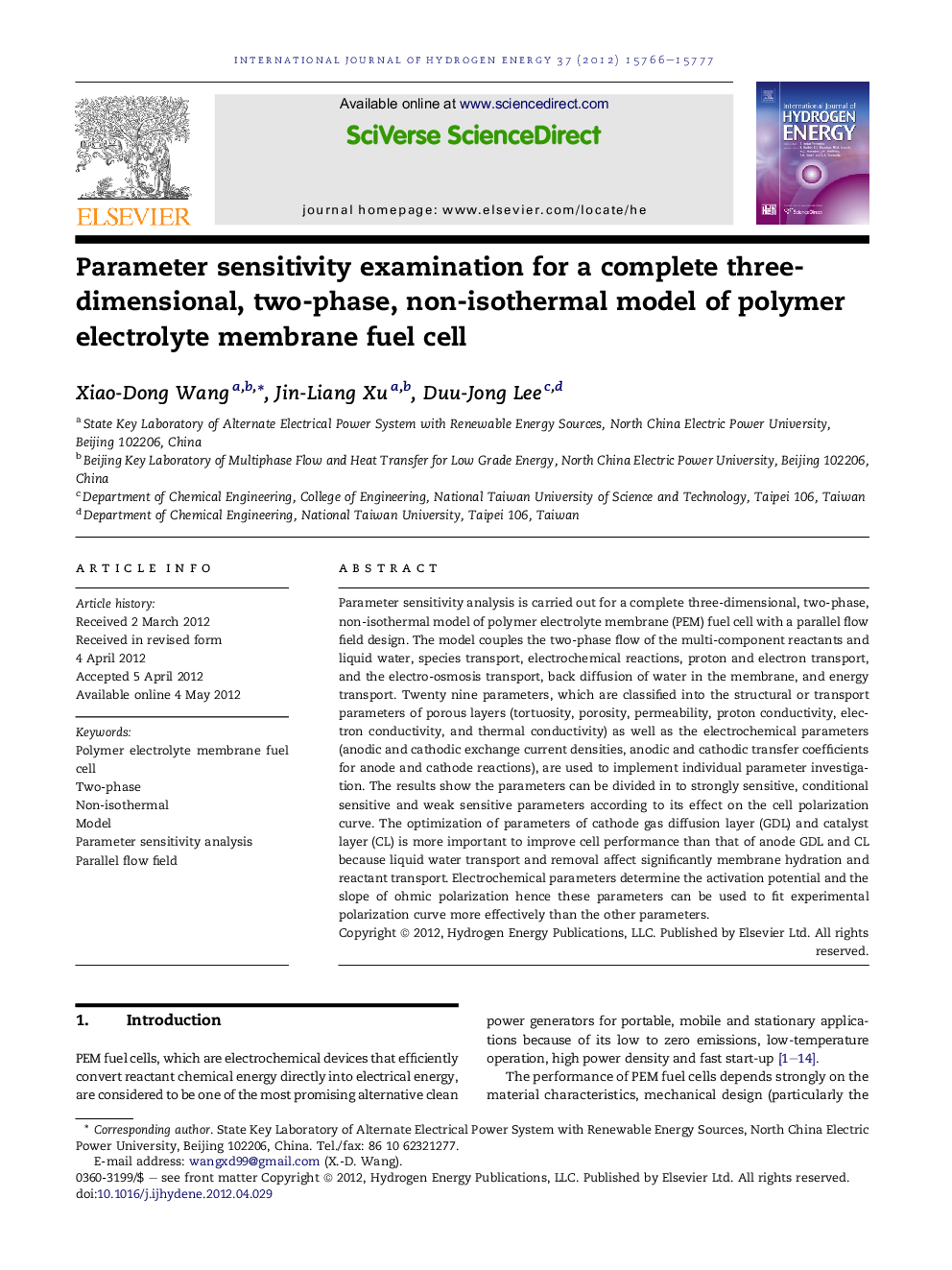| Article ID | Journal | Published Year | Pages | File Type |
|---|---|---|---|---|
| 1274591 | International Journal of Hydrogen Energy | 2012 | 12 Pages |
Parameter sensitivity analysis is carried out for a complete three-dimensional, two-phase, non-isothermal model of polymer electrolyte membrane (PEM) fuel cell with a parallel flow field design. The model couples the two-phase flow of the multi-component reactants and liquid water, species transport, electrochemical reactions, proton and electron transport, and the electro-osmosis transport, back diffusion of water in the membrane, and energy transport. Twenty nine parameters, which are classified into the structural or transport parameters of porous layers (tortuosity, porosity, permeability, proton conductivity, electron conductivity, and thermal conductivity) as well as the electrochemical parameters (anodic and cathodic exchange current densities, anodic and cathodic transfer coefficients for anode and cathode reactions), are used to implement individual parameter investigation. The results show the parameters can be divided in to strongly sensitive, conditional sensitive and weak sensitive parameters according to its effect on the cell polarization curve. The optimization of parameters of cathode gas diffusion layer (GDL) and catalyst layer (CL) is more important to improve cell performance than that of anode GDL and CL because liquid water transport and removal affect significantly membrane hydration and reactant transport. Electrochemical parameters determine the activation potential and the slope of ohmic polarization hence these parameters can be used to fit experimental polarization curve more effectively than the other parameters.
► A three-dimensional, two-phase, non-isothermal PEM fuel cell model is developed. ► Parameter sensitivity analysis is carried out for parallel flow field design. ► Parameters are divided into strongly, conditional, and weak sensitive parameters.
